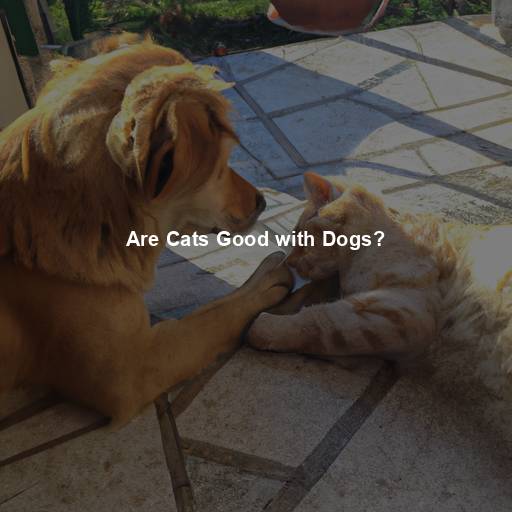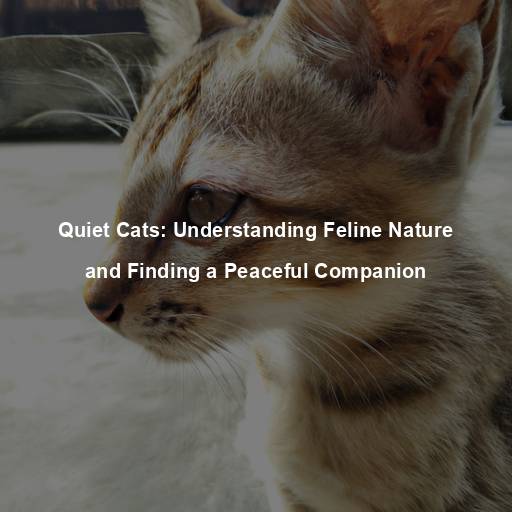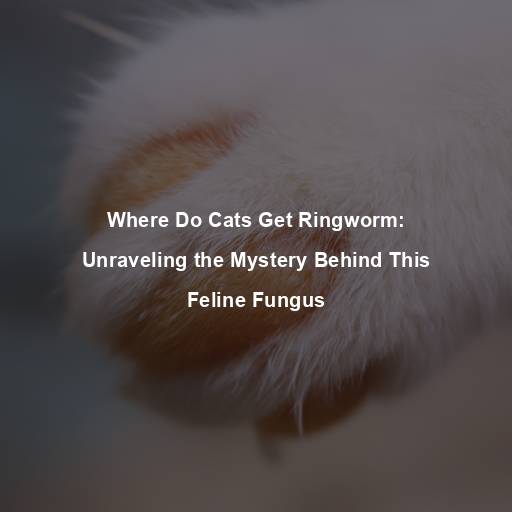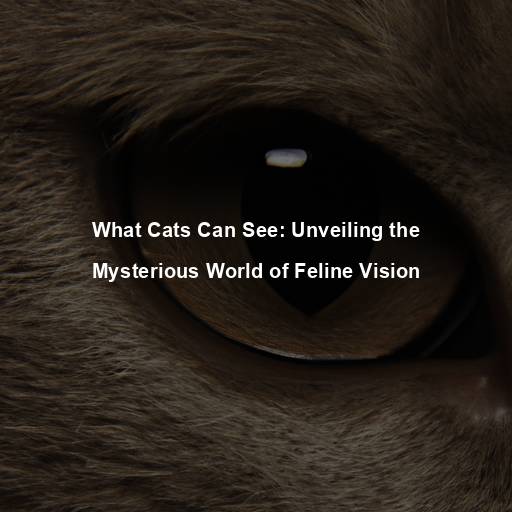Are Cats Good with Dogs?
Last Updated on October 20, 2023 by Evan
Contents [hide]
- 0.1
- 0.2 The Nature of Cats and Dogs
- 0.3 Early Socialization: The Key to Success
- 0.4 Factors Affecting Compatibility
- 0.5 Introducing Cats and Dogs
- 0.6 Signs of Compatibility and Warning Signs
- 0.7 The Benefits of Cats and Dogs Living Together
- 0.8 Understanding Prey Drive
- 0.9 Age and Socialization
- 0.10 Multi-Pet Household Dynamics
- 0.11 Creating a Safe Environment for Both Animals
- 0.12 Seeking Professional Guidance
- 0.13 Embracing the Unique Bond
- 1 Celebrating the Joy of Feline and Canine Companionship
- 2 FAQs – Are Cats Good with Dogs
When it comes to pets, cats and dogs have a special place in our hearts. They bring us joy, love, and companionship like no other. Now, we’ve all heard the age-old tale about how cats and dogs can’t get along, but hold on a minute – is that really true? In this captivating exposé, we’re going to dive deep into the enigmatic world of feline and canine connections, unraveling the truth behind their complex relationships.
The Nature of Cats and Dogs
When it comes to cats and dogs, it’s clear that they march to the beat of their own paws. Dogs, with their wagging tails and boundless energy, are renowned for their love of company, unwavering loyalty, and impressive desire to please their human counterparts. Felines, on the other hand, exhibit a streak of independence, preferring to call the shots and relying on their own resources. While it can be tempting to make sweeping statements about their contrasting characteristics, it’s important to remember that each cat and dog is a unique individual, capable of surprising us with their own quirks and preferences.
Early Socialization: The Key to Success
We all know that cats and dogs have unique personalities, but did you ever stop and wonder about the role socialization plays in shaping their behavior? It’s a fascinating topic that can leave you both enlightened and perplexed. From their earliest stages of development, these furry friends are exposed to a myriad of experiences, environments, and fellow critters, all of which leave an indelible mark on their understanding of the world. By facilitating early introductions and encouraging positive interactions, we can help these curious creatures unravel the complex language of gestures, cues, and boundaries, ultimately fostering harmonious relationships between them.
Factors Affecting Compatibility
Although socialization plays a crucial role in fostering harmony between cats and dogs, there exist a myriad of enigmatic factors that impact their compatibility. Delving deeper into this perplexing phenomenon, we unveil a multifaceted interplay of circumstances at play. Unveiling the intricacies of these contributing elements unravels an intriguing tapestry, shedding light on the variables that shape the dynamic relationship between our feline and canine companions.
Personality and Temperament
Just like us, our furry friends – cats and dogs – possess their own unique personalities. You see, some cats may embrace the presence of dogs, exuding a sociable nature that knows no bounds. Meanwhile, there are feline creatures who appreciate their quiet and prefer the solace of their own company. Similarly, dogs, depending on their breed, might be fueled by an innate instinct to chase after prey or might not be the most harmonious companions for cats.
Breed and Size
When it comes to furry companions, dogs of different breeds bring a whirlwind of characteristics, making the relationship with cats a puzzle to solve. The puzzle pieces lie in their prey drive, energy levels, and sociability. Retrievers and spaniels, with their friendly and gentle nature, often find themselves in the good books with our feline friends. But there’s more to it – we must also ponder upon the immense size differences between cats and dogs, ensuring that smaller feline companions do not find themselves flabbergasted by the sheer presence of their larger canine counterparts.
Previous Experiences
The way a cat or dog interacts with other animals can be profoundly influenced by their past encounters and experiences. If a cat or dog has had unfortunate or unpleasant interactions with a different species, it might impact their inclination to establish a harmonious bond in the future. Nonetheless, by being patient, facilitating proper introductions, and gradually exposing them, many cats and dogs can break free from the perplexity of their past and find a way to peacefully coexist with their counterparts.
Introducing Cats and Dogs
Introducing cats and dogs requires a thoughtful and gradual approach. Rushing the process can lead to stress, fear, and potentially aggressive behavior. Here are some steps to help facilitate a successful introduction:
Separate Spaces
Initially, it is crucial to provide separate spaces for the cat and dog to establish their territories and feel secure. This could include separate rooms or designated areas within the house.
Scent Exchange
Welcome to the fascinating world of animal introductions! Did you know that engaging their sense of smell can work wonders in facilitating those nerve-racking face-to-face encounters? With a touch of creativity, you can swap their bedding or even use pheromone diffusers to create a serene environment that’ll soothe those anxious vibes. Watch as familiarity blooms and tensions melt away!
Controlled Visual Contact
Gradual visual introductions through a baby gate or a cracked door can allow the cat and dog to observe each other without direct physical contact. This helps them become more comfortable with each other’s presence.
Controlled Physical Interaction
When it comes to introducing two animals, it’s crucial to observe their curiosity and sense of calm during visual encounters. Once these signs are apparent, it’s then possible to proceed with controlled physical interactions. These interactions can be brief and closely monitored, with both animals on a leash or in separate crates. To further encourage a positive experience, employing treats and expressions of praise can help establish a positive association during these interactions.
Gradual Integration
As the cat and dog become more comfortable in each other’s presence, supervised face-to-face interactions can gradually increase in duration and intensity. It is essential to closely monitor their behavior and intervene if any signs of aggression or stress arise.
Signs of Compatibility and Warning Signs
During the introduction process, it’s crucial to observe the body language and behavior of both animals. Positive signs of compatibility include:
In a world filled with constant hustle and bustle, there’s something truly mesmerizing about witnessing relaxed body postures. Whether it’s the way a person gracefully reclines on a cozy sofa, or the serene stillness that emanates from their crossed legs during deep meditation, these postures convey a sense of tranquility and ease. It’s as if time stands still, and we find ourselves yearning to unravel the mystery behind such calmness amidst the chaos.
Experience the delight of engaging in whimsical exchanges that spark joy and foster connection. Immerse yourself in a world where laughter and lightheartedness intertwine, igniting a sense of wonder and playfulness. Embrace the delightful surprises that await as you navigate a captivating realm of interactive experiences, leaving you with a lingering sense of curiosity and enchantment. Allow yourself to be transported into a realm of playful interactions, where each moment holds the potential for unexpected delight.
Discover the secret ritual that strengthens bonds among animals like never before! Dive into the fascinating world of mutual grooming and unravel the perplexing complexities of this unique behavior. From primates to birds, unleash your curiosity as we explore the burst of connection that occurs when creatures come together in this intimate act. Brace yourself for a mind-boggling journey through the animal kingdom, where grooming takes on a whole new level of enchantment and intrigue.
– Sharing resources willingly (e.g., food, toys, sleeping spaces)
On the other hand, certain warning signs may indicate that the cat and dog are not compatible:
- Prolonged aggression (growling, hissing, lunging)
Discover the bewildering world of anxiety and self-preservation as individuals navigate through their deepest fears and instinctive need for protection. Unlock the complex psychology behind these intricate emotional responses, as we delve into the depths of human vulnerability and the intricate mechanisms that trigger these innate reactions. Unravel the enigma of fear-driven behavior, as we explore the fascinating interplay between our primal instincts and the intricate tapestry of our intricate minds. Open your eyes to the perplexing complexities of our species’ defensive mechanisms, as we delve into the unique stories and experiences that shape our instinctual responses to the ever-shifting landscapes of life. - Excessive hiding or avoidance
- Frequent displays of stress (excessive grooming, excessive vocalization)
If any warning signs persist or escalate, it may be necessary to consult with a professional animal behaviorist or trainer for guidance.
The Benefits of Cats and Dogs Living Together
When cats and dogs successfully coexist, the benefits for both animals and their human companions are numerous. Here are some advantages:
Finding solace in the company of others is a universal desire, and when it comes to our furry friends, cats and dogs have a unique ability to bring joy and banish loneliness. Their presence provides a much-needed social connection, filling our days with warmth and meaningful companionship. Whether it’s a playful romp or a gentle cuddle, the interactions between these beloved pets can soothe the weary soul and infuse life with a delightful burst of togetherness. So, if you’re seeking a remedy for those tedious hours or a salve for your solitude, consider the magical bond that can bloom between cats and dogs – a delightful mystery waiting to unravel right in your own home.
Engaging in playful interactions, cats and dogs have the incredible power to ignite each other’s intellectual prowess. Their dynamic exchanges serve as a catalyst for enhanced cognitive abilities, enticing their astute minds with a captivating intellectual workout. Through these intriguing encounters, our feline and canine companions embolden their mental faculties, unraveling layers of perplexity and evoking a sense of playful wonder. Together, they embark on a journey of mental stimulation, enriching their lives with a burst of intellectual curiosity.
Get ready to unleash the ultimate synergy between our furry friends! Dog companionship may just be the energetic boost your feline pal needs to jump into playtime. With their boundless vitality, dogs are like built-in personal trainers, inspiring cats to get off their paws and join in on the action-packed fun, giving them a treat of a workout session. So, whether it’s a game of chase or a rambunctious romp, let the inter-species play begin, leaving those sedentary days behind in a whirlwind of excitement and bonding.
Experience the soothing powers of a furry friend by your side, as the gentle presence of a beloved feline or canine companion offers a profound emotional support, alleviating the burden of anxiety and stress that both humans and animals endure. Through their unconditional love and calming energy, these remarkable creatures possess the remarkable ability to provide solace and relief, fostering a sense of peace and tranquility in our lives.
Understanding Prey Drive
When it comes to blending feline and canine companions, one pressing issue to address is that insatiable prey drive some dogs possess. It’s no secret that certain breeds, like terriers or hounds, are wired to give chase and perhaps unwittingly threaten smaller creatures such as cats. Therefore, it becomes imperative to carefully gauge your dog’s inherent prey drive before venturing into introducing a feline into the household. Keep in mind that if your four-legged friend possesses a potent prey drive, the road to establishing a safe and harmonious relationship between them and a cat may prove to be more than just mere child’s play.
Age and Socialization
The dynamics of feline-canine introductions can be greatly influenced by the age factor. It appears that young puppies and kittens, given proper socialization, display a greater inclination toward forging inter-species bonds. Conversely, older cats or dogs who have missed out on early exposure to different species may face a more daunting task in accepting and harmonizing with a new species. Nevertheless, it is not an insurmountable feat, rather a process that demands an investment of time, unwavering patience, and a deliberate approach to establish an amicable rapport between a mature cat and dog.
Multi-Pet Household Dynamics
Introducing a new cat or dog into a household with existing pets can add another layer of complexity to the dynamics. If you already have a cat or a dog and are considering adding a new pet, it’s essential to consider the personalities and preferences of your current pets. Some cats or dogs may be more territorial and less accepting of newcomers, while others may be more open and welcoming. Gradual introductions, scent exchanges, and controlled interactions are crucial to ensure a smooth transition and minimize potential conflicts.
Creating a Safe Environment for Both Animals
Once cats and dogs start living together, it’s essential to create a safe environment that caters to the unique needs of each species. Here are some considerations:
Vertical Space for Cats
Cats are natural climbers and enjoy having vertical spaces to perch, observe their surroundings, and retreat to when they feel the need for privacy or relaxation. Providing cat trees, shelves, or designated high areas can help cats feel more secure and reduce potential stress.
Separate Feeding Areas
Cats and dogs have different dietary needs, and it’s crucial to provide separate feeding areas to prevent conflicts over food. Cats often prefer privacy while eating, so a quiet corner or a separate room for their feeding station can help create a stress-free mealtime.
Litter Box Placement
Cats are meticulous about their litter box habits and prefer a clean and private area to do their business. Placing litter boxes in quiet, low-traffic areas away from the dog’s reach can help cats feel more comfortable and reduce the likelihood of accidents or stress-related litter box aversion.
Training and Boundaries
Both cats and dogs benefit from training and clear boundaries. Dogs should be trained to respect the cat’s space and understand basic commands to prevent chasing or aggressive behavior. Similarly, cats can be trained using positive reinforcement techniques to associate desirable behaviors with rewards. Consistency, patience, and positive reinforcement are key when establishing boundaries and promoting harmonious coexistence.
Seeking Professional Guidance
Finding harmony between cats and dogs can sometimes be a puzzling endeavor, with various obstacles and uncertainties along the way. In such perplexing situations, it is always wise to seek the guidance of professionals who specialize in animal behavior. These experts, such as animal behaviorists, trainers, or behavior-focused veterinarians, possess the knowledge and expertise needed to assess your pets’ distinct personalities, behaviors, and surroundings, ultimately offering tailored strategies to foster a harmonious and secure relationship between your feline and canine companions.
Embracing the Unique Bond
Integrating cats and dogs can feel like navigating a maze filled with uncertainties and complexities, but the rewards that lie at the end of this winding path are truly remarkable. It’s not a one-size-fits-all scenario, as every feline-canine duo is like a beautifully intricate puzzle waiting to be solved. The key to unraveling this enigma lies in embracing flexibility and embracing the art of understanding. Brace yourself to embark on a remarkable journey of patience and adaptation, for it is through these efforts that a deep and enduring bond shall be forged, transforming the lives of your four-legged friends and, inevitably, your own.
Celebrating the Joy of Feline and Canine Companionship
The Benefits of Having Cats and Dogs as Companions
Cats and dogs bring immeasurable joy and love into our lives. Beyond their compatibility with each other, both species offer numerous benefits as individual pets:
Cats:
- Calming Presence: The soothing purr of a cat can have a calming effect on our stress levels and help lower blood pressure.
In the realm of companionship, cats shine as the champions of independence. With an innate ability to thrive on their own, they effortlessly lend themselves to individuals or families embracing the fast-paced rhythms of our modern lives. Their graceful demeanor and self-reliant nature make them a perfect match for those seeking a faithful companion who understands the value of autonomy. - Pest Control: Cats have a natural instinct to hunt and can help keep your home free from unwanted pests like mice or insects.
When it comes to grooming and exercise, cats are known for their low maintenance nature. You’ll be pleasantly surprised at how little effort is required to keep them looking fabulous and healthy. Their self-grooming habits and tendency for independent exercise make them the ideal choice for those with a busy lifestyle.
Dogs:
When it comes to faithfulness, few creatures can match the unwavering loyalty of dogs. Their ability to love unconditionally creates profound connections with those fortunate enough to call them companions. It’s truly perplexing to witness the depths of devotion these furry creatures exhibit, proving time and time again that their loyalty knows no bounds.
– Active Lifestyle: Dogs encourage an active lifestyle, as they require daily exercise, providing opportunities for outdoor activities and increased physical activity.
In this fast-paced world, where emotions often run wild, there’s something extraordinary about the unwavering companionship of our furry friends. Dogs, with their empathetic nature and unwavering loyalty, have the remarkable ability to provide emotional support that transcends words alone. Through specialized training, they become steadfast sidekicks for individuals, offering solace and assistance to those grappling with physical or mental health challenges.
Dogs have an extraordinary talent for breaking the ice and fostering social connections, serving as natural-born social facilitators. These four-legged companions possess a remarkable ability to bring individuals together, opening the doors to meaningful interactions and forging new friendships. With their innate charm and irresistible presence, dogs effortlessly create an environment that encourages social engagement and prompts encounters with unfamiliar faces.
Whether you choose to have a cat, a dog, or both as pets, their presence in our lives brings immense joy, companionship, and a sense of purpose. The unique bond we form with our feline and canine companions is a testament to the power of the human-animal connection and the endless capacity for love and understanding we share with these remarkable creatures.
FAQs – Are Cats Good with Dogs
Can cats and dogs get along?
While it’s true that cats and dogs can coexist harmoniously, the key to a successful relationship lies in a complex web of factors. The interplay of temperament, age, and socialization of both furry companions, along with the delicate art of introduction and gradual adjustment, all come into play. It’s imperative to remember that each four-legged friend has a distinct personality, meaning that cultivating a seamless connection requires patience and dedication.
How can I introduce my cat to a new dog?
Introducing a feline friend to a canine companion can be a delicate dance, full of cautious steps and uncertain twists. Grant their precious paws some time to paddle through the depths of curiosity by initially keeping them confined in separate domains, allowing their curious noses to sniff out each other’s lingering scents through the mystical veil of a door. Gentle enticements of tantalizing treats or enchanting toys may weave a harmonious tapestry of pleasant associations with their imminent rendezvous. As the sands of time trickle down, slowly unfurl the petals of supervised encounters, face-to-face but fraught with tranquil tranquility, delicately balancing the harmony between their emotions. With unwavering patience and a symphony of encouraging affirmations, you shall guide these enchanting creatures towards their celestial serenade of friendship.
Are some dog breeds better suited for living with cats?
Yes, certain dog breeds tend to have a higher probability of getting along with cats due to their natural temperament. Breeds such as Labrador Retrievers, Golden Retrievers, Beagles, and Cavalier King Charles Spaniels are known to be generally friendly and adaptable to cats. However, it’s essential to remember that every dog and cat is an individual, so breed tendencies should not be the sole factor in determining compatibility. Proper introductions and ongoing monitoring are still necessary regardless of the breed.
Can cats defend themselves against dogs?
Cats are generally agile and quick, which can give them an advantage in defending themselves against dogs if necessary. They have sharp claws and teeth that they can use for self-defense if they feel threatened. However, it’s important to remember that cats are generally smaller and less physically powerful than dogs, so it’s best to avoid situations where they may need to defend themselves. Ensuring a peaceful and safe environment through proper introductions and supervision is crucial to prevent any potential conflicts.
How can I help my cat and dog become friends?
To help your cat and dog become friends, it’s essential to provide them with positive experiences and create a peaceful environment. Gradual introductions, as mentioned earlier, along with supervised interactions, can allow them to build trust and familiarity over time. Additionally, providing separate resources such as food bowls, litter boxes, and resting areas can help prevent competition and minimize potential conflicts. Consistency, patience, and positive reinforcement of appropriate behavior can go a long way in fostering a strong bond between your cat and dog.






